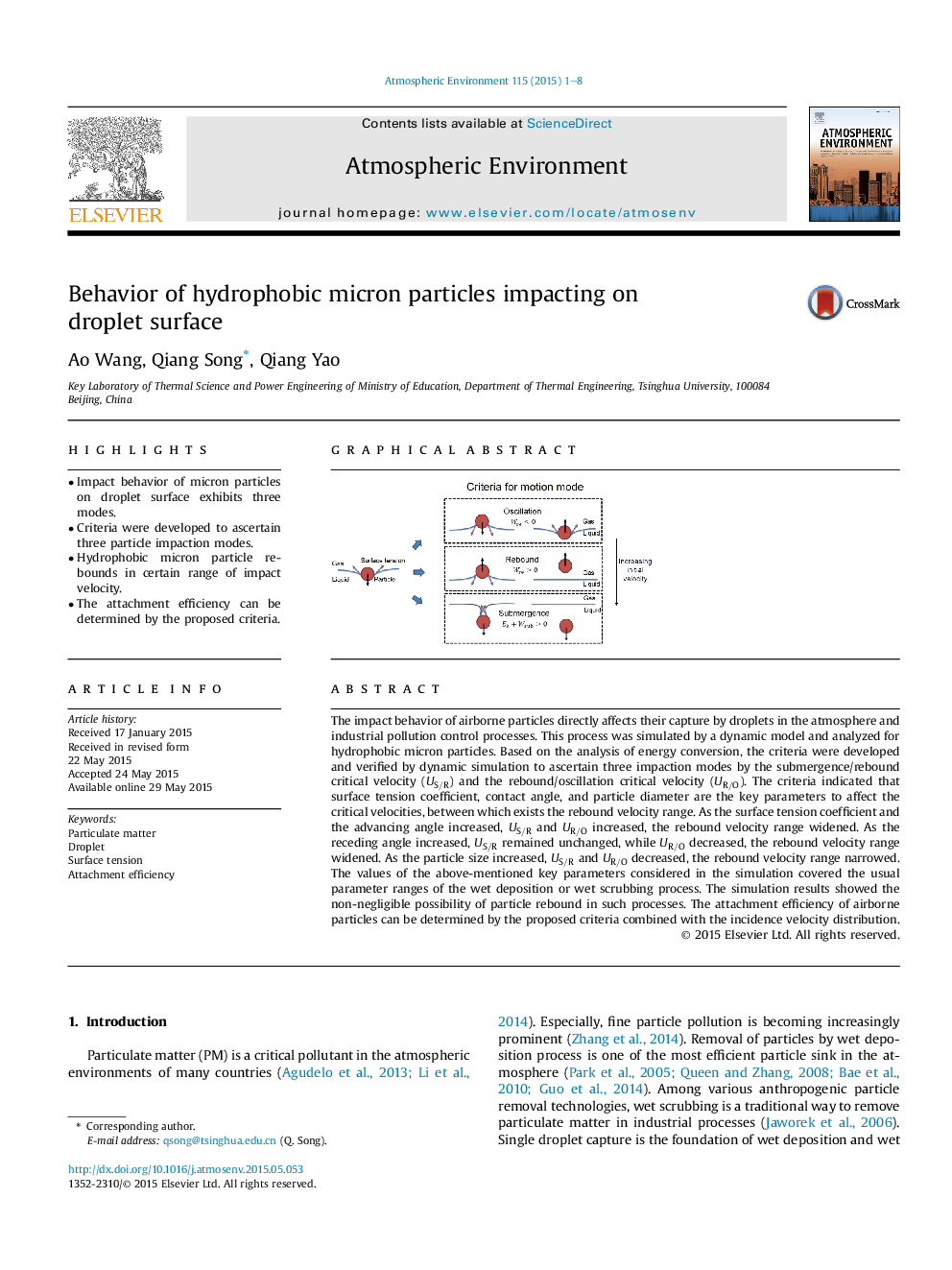| Article ID | Journal | Published Year | Pages | File Type |
|---|---|---|---|---|
| 6337763 | Atmospheric Environment | 2015 | 8 Pages |
â¢Impact behavior of micron particles on droplet surface exhibits three modes.â¢Criteria were developed to ascertain three particle impaction modes.â¢Hydrophobic micron particle rebounds in certain range of impact velocity.â¢The attachment efficiency can be determined by the proposed criteria.
The impact behavior of airborne particles directly affects their capture by droplets in the atmosphere and industrial pollution control processes. This process was simulated by a dynamic model and analyzed for hydrophobic micron particles. Based on the analysis of energy conversion, the criteria were developed and verified by dynamic simulation to ascertain three impaction modes by the submergence/rebound critical velocity (US/R) and the rebound/oscillation critical velocity (UR/O). The criteria indicated that surface tension coefficient, contact angle, and particle diameter are the key parameters to affect the critical velocities, between which exists the rebound velocity range. As the surface tension coefficient and the advancing angle increased, US/R and UR/O increased, the rebound velocity range widened. As the receding angle increased, US/R remained unchanged, while UR/O decreased, the rebound velocity range widened. As the particle size increased, US/R and UR/O decreased, the rebound velocity range narrowed. The values of the above-mentioned key parameters considered in the simulation covered the usual parameter ranges of the wet deposition or wet scrubbing process. The simulation results showed the non-negligible possibility of particle rebound in such processes. The attachment efficiency of airborne particles can be determined by the proposed criteria combined with the incidence velocity distribution.
Graphical abstractDownload high-res image (184KB)Download full-size image
